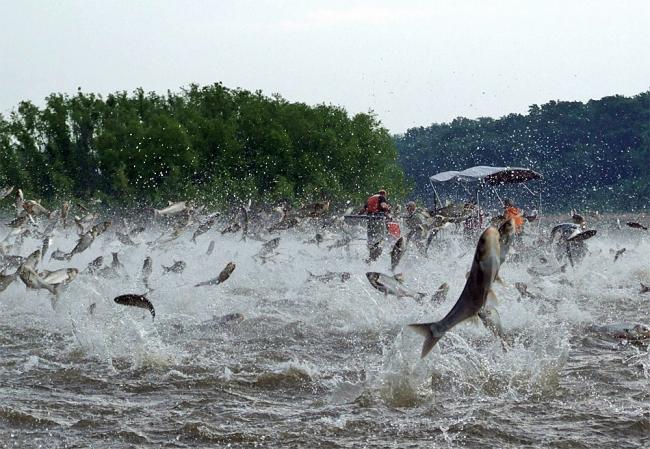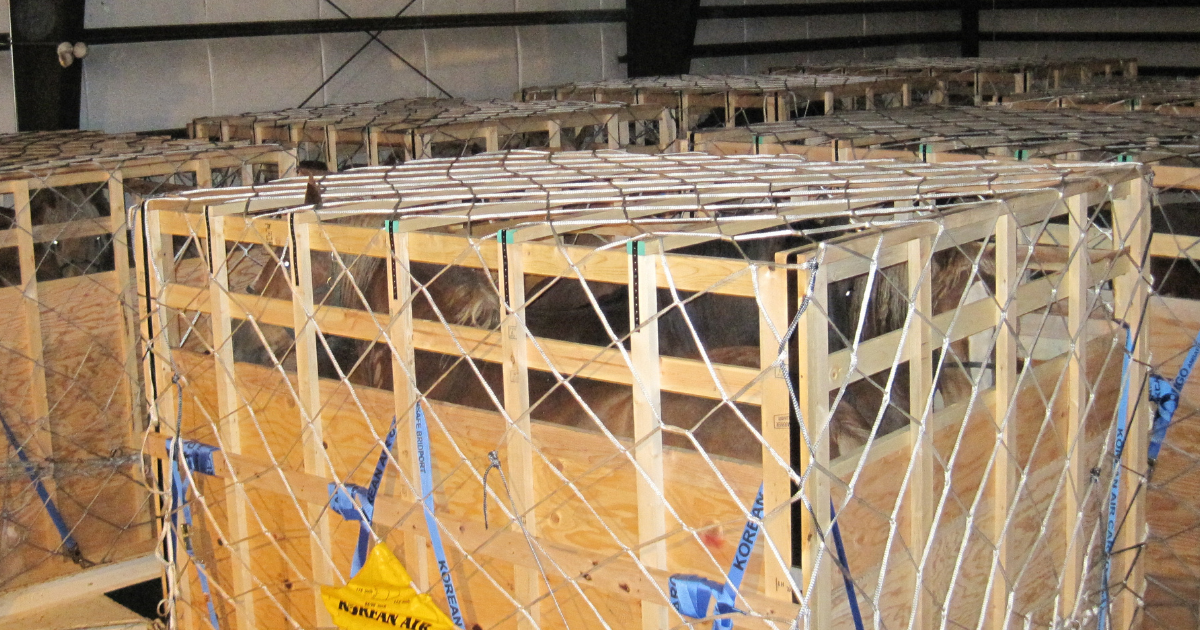This blog post explores Ontario’s proposed “Invasive Species Act”, introduced early this year. This would be the first of its kind in Canada. However, as it stands, the Act is completely silent on animal welfare issues. The Act will fail to fill current legislative gaps dealing with invasive species if it does not address the tension between protecting native species by managing invasive animals and protecting the welfare of all animals, including invasive species.
In February of this year, the government of Ontario introduced the Invasive Species Act, 2014 (Bill 167), Canada’s first standalone invasive species legislation.[i] If passed, the Act is meant to allow the government to better protect Ontario’s native plants and animals from invasive species.[ii] It would do so by streamlining the process of designating a species “invasive”, and allowing for more rapid responses to remove, eradicate or reduce the spread of the invasive species.[iii] Though many herald the Act’s potential environmental and ecological benefits for Ontario, few have commented on the legislation’s failure to mention, let alone address, potential animal welfare concerns.[iv]
Animals in Ontario may find protection under a number of different types of federal and provincial legislation, including endangered species legislation, animal cruelty legislation, wildlife conservation legislation or legislation that manages animals used as food, in research or in entertainment.[v] The federal animal cruelty legislation (the Criminal Code) protects: i) animals from baiting and fighting (section 447); ii) cattle (section 444); iii) birds or animals “kept for a lawful purpose” (445); and iv) other “unkept” animals from unnecessary pain, suffering or injury (section 445.1).[vi] Provincial animal welfare acts, however, often exempt hunting, fishing, trapping and pest control from the prohibition against causing distress.[vii] For example, the Ontario Society for the Prevention of Cruelty to Animals Act (“OSPCA Act”), one of the main pieces of animal welfare legislation in the province, exempts activities causing distress to wildlife in the wild, including fish.[viii]
Given that invasive species are currently dealt with through a “patchwork of more than 20 federal and provincial acts… none of them designed specifically to deal with invasive species…”, an invasive species act could work to fill in gaps in the current smorgasbord of legislation by specifically addressing invasive species [ix]. However, with no mention of animal welfare in the legislation, a glaring gap remains. While the legislation focuses on the eradication of invasive species and the protection of native biodiversity, concerns about the humaneness of eradication methods are not addressed. One critic of current invasive species legislation remarks, “Given [that] invasive animals share the same level of sentience and capacity to suffer as their domestic counterparts, it is perplexing that they are afforded minimal protection against suffering under [the current] legislative framework”.[x]
Concerns over the lack of regard to the welfare of invasive animals when it comes to the management and eradication of these animals has been voiced in other jurisdictions with standalone invasive species legislation, such as Australia and Japan.[xi] Critics note that “no current methods employed in controlling and eradicating invasive animals are entirely successful and many cause stress, trauma and suffering for the animals involved, raising concerns over their humaneness and impacts on animal welfare”.[xii] Control methods can include: a) physical methods, such as capture and removal or shooting; b) biological control, which “uses a living organism to reduce or eliminate the population of the invasive species”, for example, by eating or causing the invasive species to become diseased; and c) chemical methods, such as poisoning or fumigation.[xiii] Welfare concerns with regards to baiting and trapping go beyond the welfare of target animals to welfare implications and inadvertent killing of non-target animals.[xiv] Chemical control measures can also pose issues for animal welfare. For example, chloropicrin, a gas that is used for fumigation of rabbit warrens in Australia is a strong sensory irritant that causes death by respiratory failure.[xv] For some rabbits it takes up to one week to die.[xvi]
The Act defines an “invasive species” as any “species that is not native to Ontario, or to a part of Ontario, and, (a) is harming the natural environment of Ontario or of the part of Ontario in which it is present, or (b) is likely to harm the natural environment of Ontario, or of a part of Ontario, regardless of whether it is present in Ontario or in a part of Ontario.[xvii] Along with plants and insects, these may include wildlife, feral animals and exotic pets. Section 6 of the Act extends the “invasive species” classification to “carriers” of the invasive species, which could be a native provincial species.[xviii] Further included under the definition are members of a species that are “not easily distinguished from an invasive species”.[xix] The Ontario Invasive Species Strategic Plan (“OISSP”) published by the Ontario government in 2012 further provides that “an invasive species may include species native to Ontario, that have been introduced to a new geographic region due to human activity… [or if the species’] introduction or spread can be linked to our changing climate”.[xx]
The Act gives the Lieutenant Governor in Council the power to make regulations prescribing and classifying invasive species and prescribing any thing that is able to be a host to, or facilitate movement of, an invasive species as a “carrier”.[xxi] The Act also gives power to the Minister to make orders designating invasive species if he or she believes them to be a significant threat to the natural environment and he or she believes that the time required to make a regulation would increase the harm to the environment.[xxii] “Harm to the natural environment” is defined as “any adverse effect to biodiversity or ecological processes or to natural resources and their use”.[xxiii]
Another concern with the Act, identified by NDP leader, Andrea Horwath, is that it puts too much emphasis on dealing with invasive species after they are already introduced in Ontario, that is, on removal, eradication and reducing the spread of invasive species. Referring to Asian carp being introduced into Ontario, she remarks, “An invasive species act that deals with the fallout after the fact seems to me a little bit short on action . . . if we can get the carp stopped before they come up into our waterways, we will be much, much better off“.[xxiv] The OISSP also indicates that “[p]reventing harmful introductions before they occur is the most effective means to avoid the risk of invasive species arriving in Ontario… as they avoid the economic, environmental and social costs of invaders”.[xxv]
An American author, Cassandra Burdyshaw, provides in her paper on laws concerning invasive species that as globalization increases, so to does the threat of new species being introduced. “Human activity such as trade, travel and tourism is likely to continue to increase substantially, increasing the speed and volume of species movement to unprecedented levels”.[xxvi] As the threat increases, new measures are needed to protect native biodiversity. There is a tension between protecting native species by managing invasive animals and protecting the welfare of all animals, including invasive species, that is not addressed by the Ontario Invasive Species Act. If the legislation is to fulfill its purpose of fully providing for the management of invasive species, it must address both how it will protect native animals and biodiversity as well as how it will deal with animal welfare concerns around the management and eradication of invasive animals.
_________________________________________________________________________
Written by Sarah Ure – BA, JD – Articling Student for Animal Justice Canada
This blog and the contents herein are for informational purposes only and do not constitute legal advice. Readers are advised to seek legal counsel prior to acting on any matters discussed herein. The opinions expressed are those of the author.
_________________________________________________________________________
[i] Bill 167, An Act respecting Invasive Species, 2nd Sess, 40th Leg, Ontario, 2014 (second reading 8 April 2014) [Bill 167]; Ontario Ministry of Natural Resources and Forestry, Fighting Invasive Species in Ontario: Province Proposing New Legislation to Take Action Against Invasive Species, online: Government of Ontario <http://news.ontario.ca/mnr/en/2014/02/fighting-invasive-species-in-ontario.html> [Fighting Invasive Species].
[ii] Fighting Invasive Species, supra note i.
[iii] Ibid. [Fighting Invasive Species]
[iv] For example, the legislation has been publicly approved by such organizations as: Ontario Rivers Alliance, online; <http://www.ontarioriversalliance.ca/category/concerns/invasive-species/>; and Conservation Ontario, online: <http://www.nation.on.ca/resources/media/press-releases/conservation-ontario-supports-unique-proposed-invasive-species>.
[v] Endangered species legislation: Endangered Species Act, ON and Species at Risk Act, CA. Animal cruelty legislation: OSPCA Act, ON and Criminal Code of Canada. Wildlife conservation legislation: Fish and Wildlife Conservation Act, ON and Canada Wildlife Act, CA. Legislation that manages animals used as food: Health of Animals Act, ON and Meat Inspection Act, ON. Legislation that manages animals in research: Animals for Research Act, ON. Legislation that manages animals in entertainment: OSPCA Act, ON.
[vi] Criminal Code of Canada, RSC 1985, c C-46.
[vii] Cruelty Legislation, online: Animal Alliance <http://www.animalalliance.ca/campaigns/cruelty-legislation.html>.
[viii] Ontario Society for the Prevention of Cruelty to Animals Act, RSO 1990, c O-36, s 11.2(6)(a)
[ix]Richard J Brennan, “Ontario introduces Canada’s first invasive species law”, The Toronto Star (26 February 2014) online: The Toronto Star <http://www.thestar.com/news/queenspark/2014/02/26/ontario_introduces_canadas_first_invasive_species_law.html> [Brennan].
[x] Maike Dorn, Hidden Victims: Lack of Welfare Protection of Invasive Animals in Australia, online: The Law Society of New South Wales <https://www.lawsociety.com.au/cs/groups/public/documents/internetyounglawyers/063777.pdf> at 2 [Hidden Victims].
[xi] Hidden Victims, supra note x; Okimasa Murakami, Toward Protecting Ecosystems, online: Advocacy for Animals <http://advocacy.britannica.com/blog/advocacy/2009/01/japan’s-invasive-alien-species-act-toward-protecting-ecosystems/>.
[xii] Hidden Victims, supra note x at 1-2.
[xiii] Bill 167, supra note i at s 19(2)(a) + s 27(2); Hidden Victims, supra note x at 4-5; Ontario Ministry of Natural Resources and Forestry, How government combats invasive species, online: Government of Ontario <https://www.ontario.ca/environment-and-energy/how-government-combats-invasive-species>.
[xiv] Hidden Victims, supra note x at 5.
[xv] Hidden Victims, supra note x at 4-5.
[xvi] Hidden Victims, supra note x at 5.
[xvii] Bill 167, supra note i at s 1.
[xviii] Bill 167, supra note i at s 6.
[xix] Bill 167, supra note i at s 3(2).
[xx] Ontario Ministry of Natural Resources, Ontario Invasive Species Strategic Plan 2012, online: Government of Ontario < https://www.ontario.ca/environment-and-energy/ontario-invasive-species-strategic-plan-2012 > at 1 [Ontario Invasive Species Strategic Plan].
[xxi] Bill 167, supra note i at s 4 + s 6.
[xxii] Bill 167, supra note i at s 5.
[xxiii] Bill 167, supra note i at s 1.
[xxiv] Brennan, supra note ix.
[xxv] Ontario Invasive Species Strategic Plan, supra note xx at 20.
[xxvi] Cassandra Burdyshaw, “Detailed Discussion of the Laws Concerning Invasive Species” (2011) Michigan State University College of Law, online: Animal Legal and Historical Center <https://www.animallaw.info/article/detailed-discussion-laws-concerning-invasive-species>.




